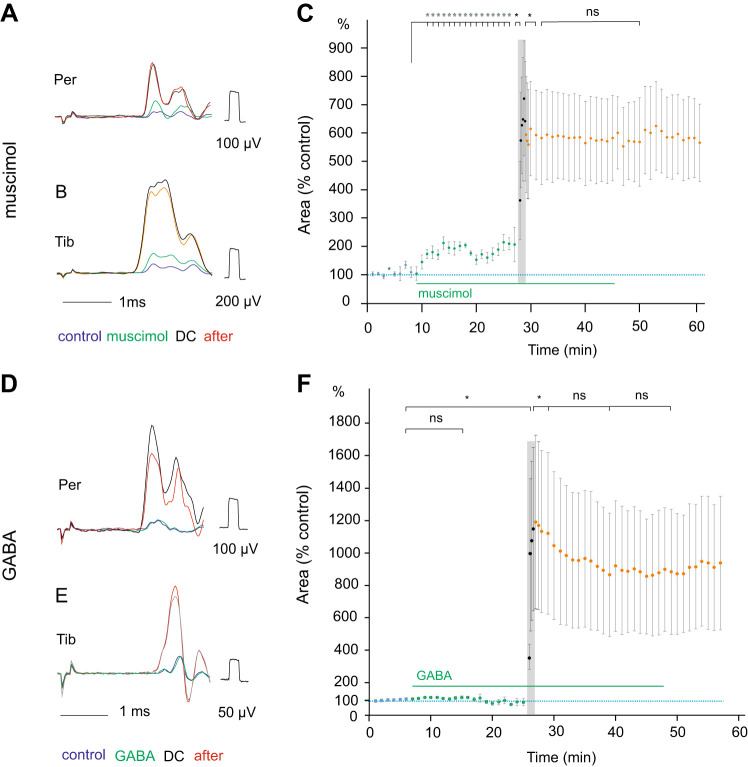Fig. 4.
Effects of muscimol and GABA on the development and expression of direct current (DC) modulatory actions. A and B: examples of nerve volleys evoked in the peroneal (Per) and tibial (Tib) nerves by stimulation of the dorsal column above their motor nuclei. The nerve volleys (averages of ten single records) were evoked by 23 µA and 25 µA, respectively, and recorded during the control period, following the intravenous administration of muscimol (0.5 mg\kg), during 1-µA DC application for 1 min and 10 min after its termination are superimposed. C: Increase in the area of nerve volleys evoked by stimulation of the dorsal columns (ordinate) following muscimol administration, during 1 min polarization and during the postpolarization period (abscissa). Pooled data (means ± SE) from 10 series of records from Per and Tib in 3 rats, including those illustrated in A and B. The differences were statistically significant between the volleys evoked at the end of the control period and following muscimol (P = 0.0032), between the nerve volleys evoked before and at the onset of DC (P = 0.0036), and between the nerve volleys at the end of DC and 2 min after its termination (P = 0.0068) but not between 2 and 10 min of the postpolarization period. A t test for paired samples was used (n = 11). D and E: examples of nerve volleys evoked by stimulation of the dorsal column as in A and B. The nerve volleys were evoked by 26 µA and 35 µA during the control period, 3 min after the beginning of GABA ionophoresis (30 nA), during 1-µA DC application and 10 min after its termination. F: time course of changes in the area of nerve volleys evoked by stimulation of the dorsal columns before and during GABA ionophoresis and during and following a 1-min 1-µA polarization. Pooled data (means ± SE) from 13 series of records in 3 rats. Using t test for paired samples, the differences between the volleys were statistically significant for those at the end of the control period and during DC (P = 0.0271), between the nerve volleys at the end of DC and 2 min after its termination (P = 0.0133), but not between 2 and 10 min of the postpolarization period (P = 0.0655) nor between 10 and 20 min of this period (P = 0.9790). *P < 0.05; ns, not significant.

